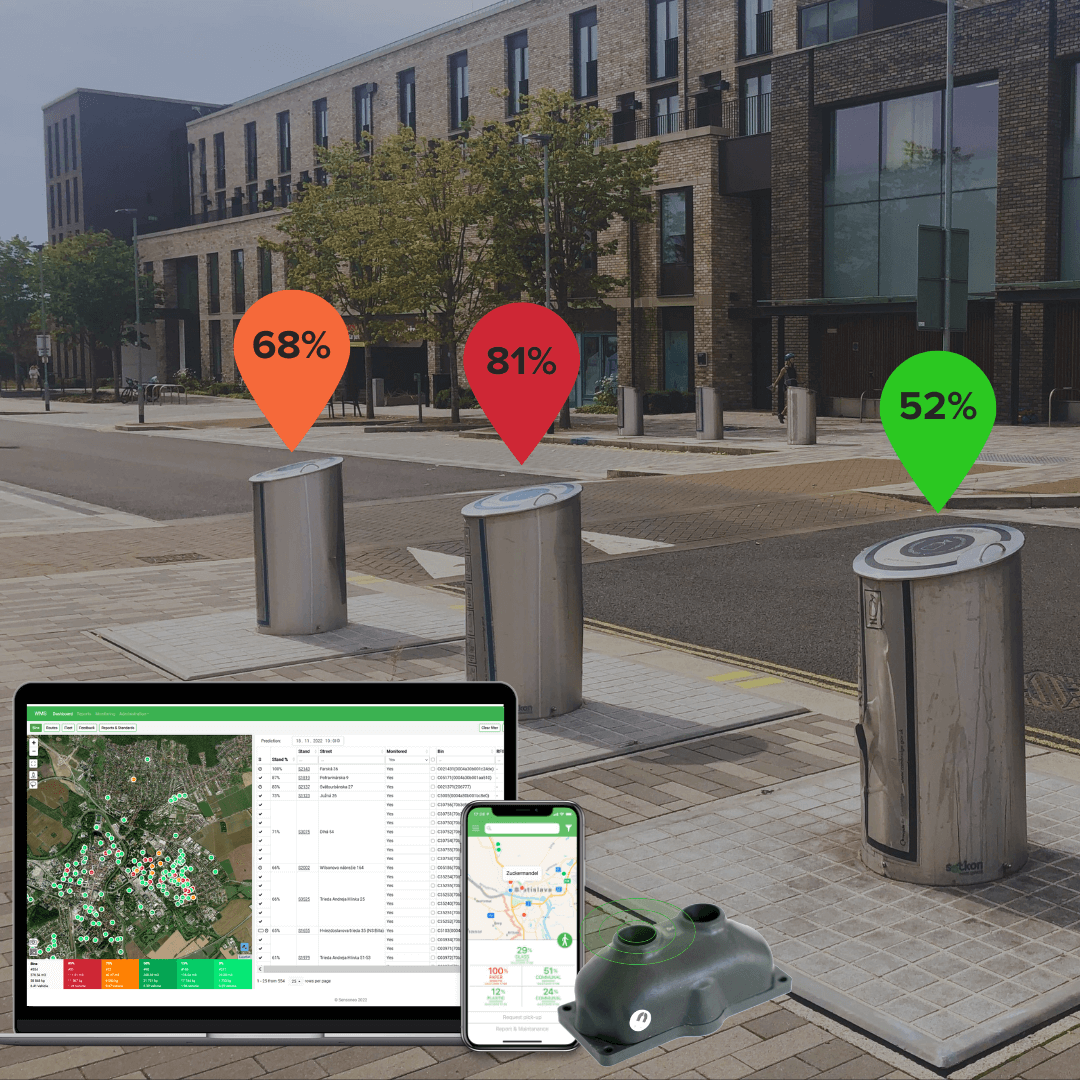Introduction
AI in waste management is transforming how cities manage waste, enhance recycling, and reduce environmental impact. Advanced AI technologies streamline waste sorting, optimize collection routes, and improve overall efficiency. This article explores seven significant roles of AI in waste management, highlighting its revolutionary impact on creating cleaner, more sustainable urban environments.
1. Enhanced Waste Sorting and Recycling
AI in waste management excels in waste sorting and recycling. Advanced image recognition and machine learning algorithms enable AI systems to distinguish between various waste types, such as plastics, metals, and paper. This precision ensures efficient recycling, reducing contamination and increasing recycling rates. As a result, more waste is diverted from landfills, promoting sustainability and resource conservation.

AI-powered systems also adapt to new recycling protocols, ensuring compliance with evolving regulations. This adaptability is crucial for maintaining efficient recycling processes in the face of changing environmental policies. By continually improving sorting accuracy, AI-driven systems enhance the overall effectiveness of recycling programs.
2. Real-Time Waste Monitoring and Management
AI provides real-time waste monitoring, a significant advancement in waste management. Smart sensors equipped with AI detect waste levels in bins and dumpsters, providing timely alerts to waste management services. This real-time data allows for optimized waste collection schedules, reducing the frequency of collections and cutting down on fuel consumption and emissions.

Moreover, real-time monitoring prevents overflow, maintaining cleanliness and hygiene in urban areas. AI-driven waste management systems ensure that waste is collected promptly, enhancing the efficiency of waste management operations and contributing to cleaner cities.
3. Predictive Maintenance of Waste Management Equipment
AI’s predictive analytics capabilities are invaluable for maintaining waste management equipment. By analyzing data from machinery, AI predicts when equipment is likely to fail or require maintenance. This foresight enables proactive maintenance, minimizing downtime and preventing costly breakdowns.
Efficient predictive maintenance ensures continuous operation of waste management systems, reducing the risk of disruptions. AI-driven maintenance strategies enhance the reliability and longevity of waste management equipment, contributing to the overall efficiency and cost-effectiveness of waste management operations.
4. Optimized Waste Collection Routes
AI optimizes waste collection routes by analyzing traffic patterns, waste generation data, and collection schedules. This optimization reduces fuel consumption, operational costs, and the carbon footprint of waste management vehicles. AI-driven route planning ensures that waste collection is efficient and timely, preventing waste overflow and maintaining cleanliness.
Furthermore, AI can adapt collection routes in real-time based on changing conditions, such as traffic congestion or unexpected waste volume. This dynamic approach maximizes the efficiency of waste collection services, ensuring that waste is collected before bins reach capacity.
5. Reduction of Food Waste
AI plays a crucial role in reducing food waste by analyzing consumption patterns and predicting food demand. In restaurants and retail, AI recommends optimal inventory levels, minimizing overstock and spoilage. For households, AI-powered apps suggest meal plans based on available ingredients, reducing the likelihood of food waste.
Additionally, AI can identify trends in food waste, providing insights for more effective waste reduction strategies. By addressing food waste at multiple levels, from production to consumption, AI contributes to more sustainable food systems and reduces the environmental impact of wasted food.
6. Automated Hazardous Waste Management
Managing hazardous waste requires precision and caution, areas where AI excels. AI automates the identification and handling of hazardous materials, ensuring safe disposal and minimizing human exposure to dangerous substances. AI-driven systems classify and sort hazardous waste accurately, enhancing compliance with environmental regulations and protecting public health.

Automated hazardous waste management reduces the risk of environmental contamination and health hazards. By ensuring proper disposal, AI-driven systems contribute to safer and cleaner environments.
7. Data-Driven Policy Making and Public Awareness
AI-driven data analytics provide valuable insights into waste generation trends and patterns. Governments and waste management organizations can use this data to craft effective waste management policies and strategies. Additionally, AI supports public awareness campaigns by providing data-driven information on recycling and waste reduction practices.
Educating the public on proper waste disposal and recycling enhances community engagement and participation in waste management efforts. AI-driven public awareness initiatives promote responsible behavior, contributing to cleaner and more sustainable urban environments.
Conclusion
AI in waste management is revolutionizing how cities handle waste, enhancing recycling, and reducing environmental impact. From optimizing waste collection routes to reducing food waste, AI offers transformative benefits. As technology continues to evolve, AI’s role in waste management will only grow, making it an indispensable tool for achieving environmental sustainability.
Further Reading
For more insights on AI’s transformative role in various industries, check out our series on AI Technologies and Innovations.
FAQ
Q1: How does AI improve recycling efficiency?
AI uses advanced image recognition and machine learning to accurately sort recyclable materials, increasing recycling rates and reducing waste.
Q2: What role does AI play in waste collection?
AI optimizes waste collection routes, reducing fuel consumption and emissions while ensuring timely waste collection.
Q3: Can AI help reduce food waste?
Yes, AI predicts food demand and suggests optimal inventory levels, minimizing overstock and spoilage in both retail and households.
Q4: How does AI contribute to public awareness about waste management?
AI provides data-driven insights and supports public awareness campaigns, educating people on proper waste disposal and recycling practices.
Q5: Is AI involved in managing hazardous waste?
AI automates the identification and handling of hazardous materials, ensuring safe disposal and compliance with environmental regulations.



